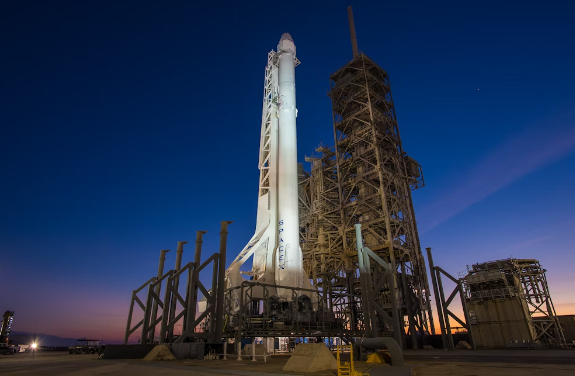Rocket Rodeo: SpaceX Lassos Its Booster
Powered by MasterCFA.com
In a groundbreaking achievement, SpaceX has successfully caught its Super Heavy booster using a tower with giant mechanical arms during its 5th Starship test flight in Boca Chica, Texas. This innovative recovery method, executed on October 13, 2024, marks a significant milestone in the company’s pursuit of fully reusable rocket technology.
Why This Cosmic Catch Matters
Economic Ripples Across the Galaxy
The successful catch of the Super Heavy booster represents a major leap in rocket reusability. This advancement has far-reaching implications for the space industry and the broader economy:
- Cost Reduction: By reusing the first stage booster, SpaceX can significantly lower the cost of space launches. This cost-efficiency could lead to increased space exploration and satellite deployment activities.
- Market Disruption: The achievement strengthens SpaceX’s position in the commercial space industry, potentially influencing market dynamics and competition.
- Innovation Spillover: Technologies developed for this project could find applications in other industries, driving innovation and economic growth.
From Main Street to the Milky Way
The impact of this achievement extends beyond the space industry:
- Job Creation: Increased space activities could lead to more jobs in aerospace and related sectors.
- Investment Opportunities: As the space industry grows, new investment avenues may open up for businesses and individuals.
- Global Connectivity: Cheaper launches could accelerate the deployment of satellite networks, improving global internet coverage and communication.
Economic Theories Taking Flight
Schumpeter’s Creative Destruction in Action
Joseph Schumpeter’s theory of creative destruction is vividly illustrated by SpaceX’s innovations. The company’s reusable rocket technology is disrupting traditional space launch methods, potentially rendering older, less efficient systems obsolete.
Economies of Scale and Learning Curve Effects
SpaceX’s achievement demonstrates two key economic concepts:
- Economies of Scale: As SpaceX increases its launch frequency with reusable rockets, it can spread fixed costs over more launches, reducing the average cost per launch.
- Learning Curve Effects: With each successful catch and reuse, SpaceX gains valuable experience, potentially leading to improved efficiency and further cost reductions over time.

Real-World Application
These theories are not just academic concepts but have real-world implications:
- Historical Example: The aviation industry experienced similar dynamics in the early 20th century. As aircraft technology improved and became more reliable, economies of scale and learning curve effects led to significant cost reductions, making air travel accessible to a broader population.
- Potential Future Impact: If SpaceX can consistently achieve booster recovery and reuse, we might see a similar transformation in the space industry. This could lead to more affordable space tourism, increased scientific research in space, and even the possibility of space mining becoming economically viable.
The Next Frontier: What Could Happen?
- Rapid Launch Cadence: With reusable boosters, SpaceX could dramatically increase its launch frequency, potentially leading to daily or even multiple daily launches.
- Space Tourism Boom: Reduced launch costs could accelerate the development of space tourism, making it accessible to a broader audience.
- Interplanetary Ambitions: This technology is a stepping stone towards SpaceX’s goal of Mars colonization, potentially accelerating plans for interplanetary missions.
- Industry-Wide Shift: Other space companies may be forced to develop similar technologies to remain competitive, leading to industry-wide innovation.
Why You Should Keep Your Eyes on the Skies
Understanding these developments is crucial for several reasons:
- Investment Opportunities: The growing space industry presents new investment avenues in aerospace, satellite technology, and related sectors.
- Career Prospects: As the industry expands, it will create demand for various skills, from engineering to finance and project management.
- Global Economic Shifts: The space industry’s growth could influence global economic patterns, affecting various sectors and markets.
- Technological Advancements: Innovations in space technology often lead to advancements in other fields, creating new business opportunities and improving daily life.
Questions to Ponder
- How might the reduced cost of space launches affect global communication and internet infrastructure?
- What potential environmental impacts could result from increased space activities, and how might they be mitigated?
- How could the growth of the commercial space industry influence international relations and space governance?
- What new business models might emerge as a result of more affordable access to space?
- How could advancements in reusable rocket technology impact other forms of transportation on Earth?
Keep Learning with MasterCFA: Staying informed about groundbreaking technological advancements and their economic impacts is essential for any aspiring financial analyst. Dive deeper into these topics to enhance your understanding of how innovation drives economic change and creates new market opportunities. Explore more insightful articles and resources with MasterCFA to stay ahead in your finance career and prepare effectively for the CFA Exam.















